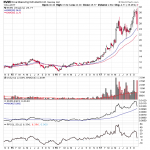<< Read Part 1: It Was Never About Oil
The entire point of leveraged positions is the margin of safety. That is true on both sides of that equation, as for the provider and the borrower/user. In the most famous examples of collapse, from AIG to LTCM losses were never really the issue. None of them could withstand instead collateral calls to their liquidity reserves. As noted last week, AIG’s “toxic waste” positions ended up registering some $20 billion profits to the Federal Reserve and the government via its (illegal) Maiden Lane SIV’s. AIG just could not withstand the liquidity demands brought about by increasing calculated volatility.
Another famous episode offers the same interpretation while providing some further insight into the world of leverage and liquidity as it exists now. Orange County went into bankruptcy with assets that were all still money good. The county’s investment fund, run by Robert Citron, was holding paper from mostly government agencies and even UST’s. Out of the nearly $20 billion in the fund close to its demise, $16.7 billion was UST’s, agency fixed rate bonds, agency floating rate bonds, CD’s and commercial paper. The problem was the combination of the floating rate FNMA’s and that the fund was increasingly leveraged as Citron’s bets were further imperiled.
Throughout the early 1990’s, Orange County’s fund was handsomely beating every benchmark. So much so that municipalities throughout the county were beating down Citron’s door in order to invest in his magic; some cities, such as Irvine, even borrowed through bond offerings just to make available cash to put in. S&P, as the bankruptcy transcript tells, even conditioned its highest investment rating on Irvine’s bonds such that they were placed in Citron’s “care.”
The manner of the outperformance was as it usually is in modern wholesale finance; available and easy leverage of all kinds and all forms. In this specific instance, Citron was building the fund’s bond portfolio not for general coupon returns but so that they were available for reverse repos. When the interest rate environment was in his favor, the Orange County fund was leveraged less than 2 to 1; when it started turning against, that was when the leverage piled up as almost a gambler’s view of doubling down to “make it back.”
As it turned out, even though Citron’s broker Merrill Lynch had warned him about both the increasing volatility risk of an increasingly homogenous portfolio and that interest rates might rise, Citron continued on his course regardless of the advice (and Merrill kept selling securities to him and funding those positions). Later grand jury proceedings even found evidence that Mr. Citron was using a “mailorder astrologer and a psychic for interest rate predictions.” He was, starting in 1994, quite wrong with those predictions.
Still, the fact that rates had gone up even sharply did not alone produce catastrophe; there were no losses to book based on credit defaults or skipped coupons in any of the underlying. The “inverse floaters” at the center of the controversy were simply designed as a mechanism for FNMA to reduce or hedge its own funding costs in the event of conditions just the kind produced by the Fed’s rate hikes in 1994.










Leave A Comment